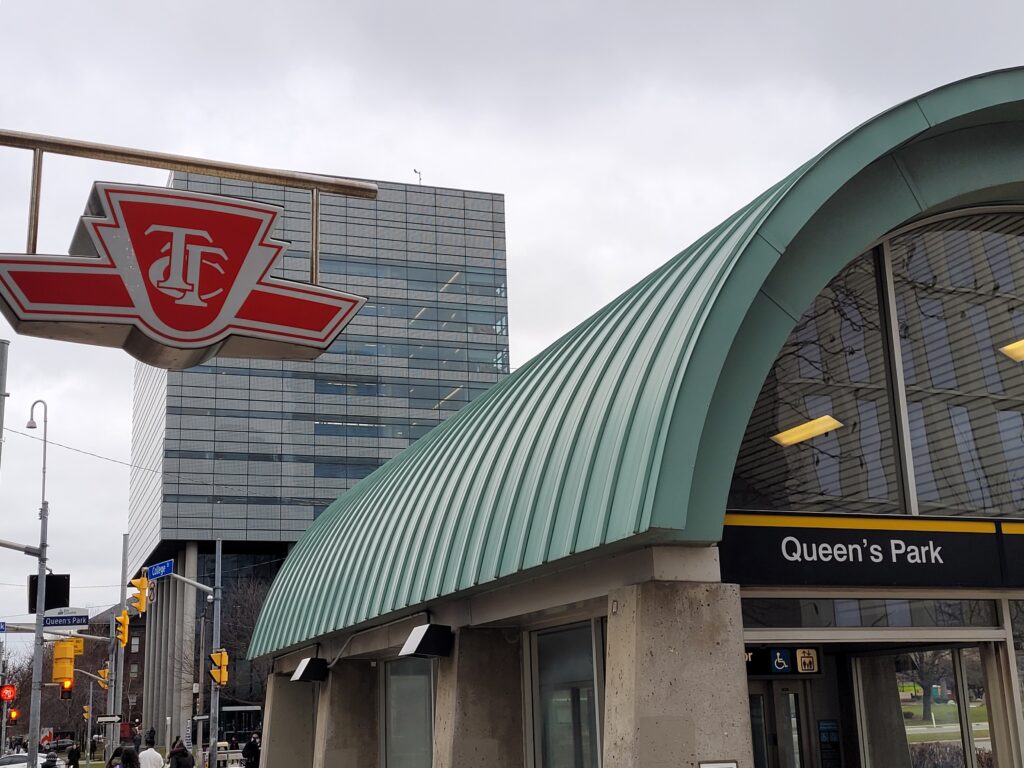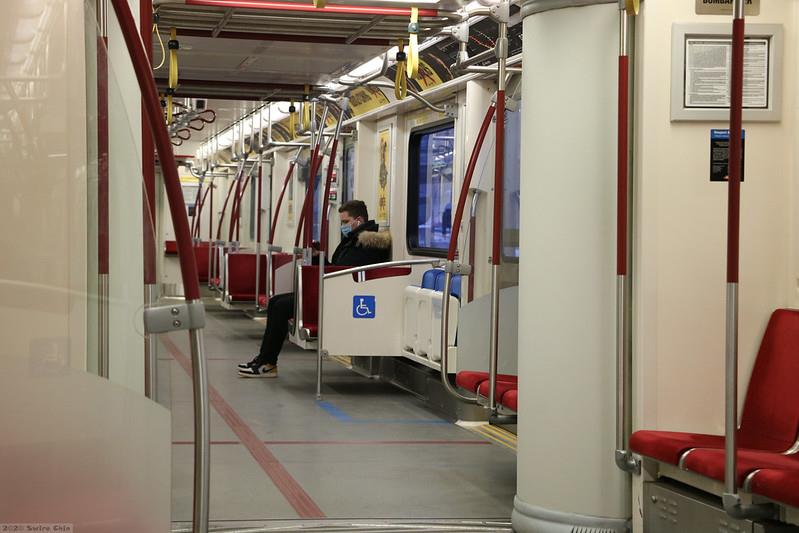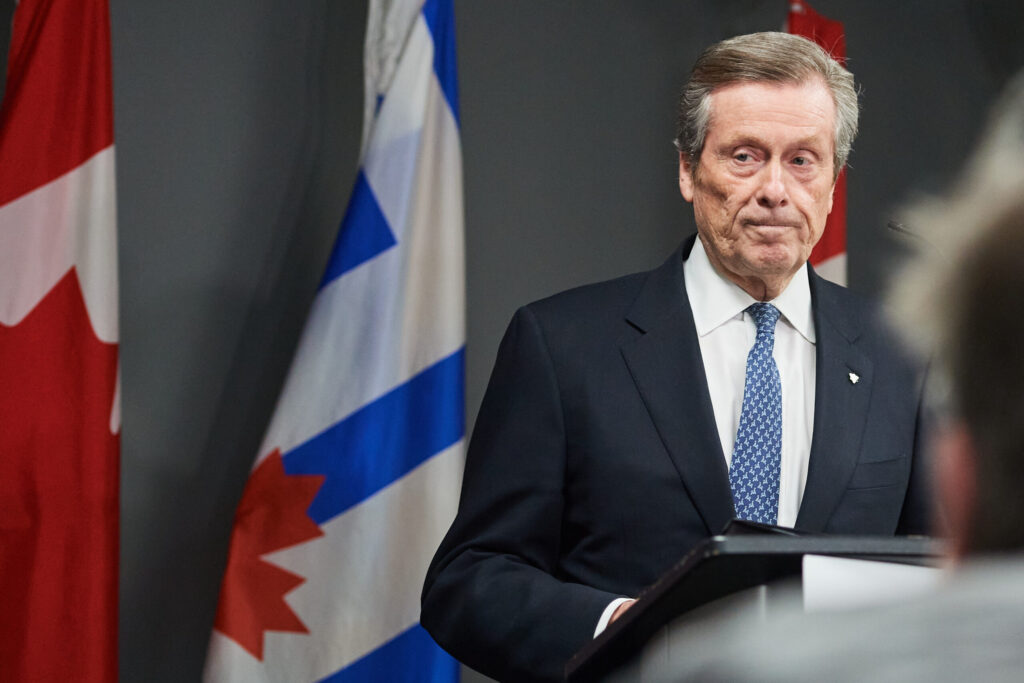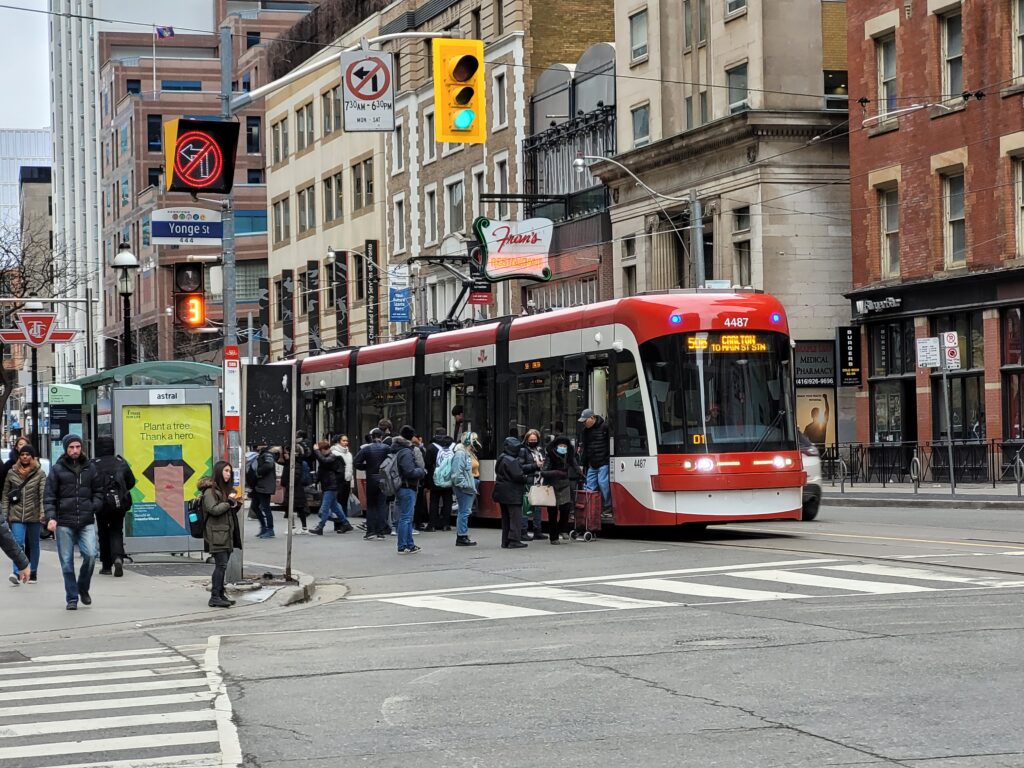By Scott Martin
August Puranauth pulled into Dundas Station 40 minutes late. The GO train had been delayed, so the 90 minute trip took more than two hours. Puranauth is used to long wait times on the TTC. As a community organizer for TTCRiders, an advocacy group organizing transit riders into political action, this is one of many things they hope to improve.
On a Wednesday in early March, rush hour was ramping up at 4:40 p.m. Sitting on a bench in the station, August observed that the TTC’s still not as packed as it was back in 2019, when it was averaging two million riders per day. Other things have changed over the past few years, too. With high profile violence on Toronto’s public transit system in the news, like the unprovoked attack at Keele station that left 16-year-old Gabriel Magalhaes dead, riders are understandably worried.
The TTC is at a crossroads. In mid-February the former John Tory-led municipal government passed cuts to services, higher fares, raised crowding standards and made controversial increases in police presence on transit. TTCriders is leading the pushback against these policies and it’s urging Torontonians to join the fight. The group is pushing for new funding models, for public transit access to be equal, high-quality, affordable and frequent, and for the government to invest in public transit as a climate solution. Monica Mason, a part-time worker at the organization, said there’s an inspiring amount of growing support for the group. “There are lots of people who are fired up about this. It’s just been amazing to see.”
On February 15, 2023, Tory walked into the last budget meeting of his mayoral career. He had announced his resignation five days earlier due to an unrelated scandal, but hadn’t submitted the paperwork, intending to leave after the budget was passed. During the meeting, public attendees chanted “House the homeless, feed the poor, kick John Tory out the door.” That day, TTCRiders demonstrators wore signs reading “Cuts ≠ Safety.” Police were called in, and one person was carried out by officers. The budget introduced that day contained an increase of $48.3 million for police. The TTC, meanwhile, received a $53 million bump but it came with a host of conditions. A 10-cent fare increase applied to single adult and youth fares. Higher crowding standards meant capacity has gone from 30 to 45 people on buses. Reduced services in off-peak hours meant longer wait times. More police on the TTC. The fare increases began April 3.
Shelagh Pizey-Allen, a staff member at TTCRiders, said there’s no evidence that police prevent violence on the TTC, but there’s plenty to show Black and Indigenous people, as well as the unhoused, are disproportionately affected by police in Toronto. She also said that cuts in service may lead to more security incidents. The current delays Puranauth has experienced, for example, led them to adjust riding habits. Staying in the city late is something to avoid when trains and buses run less often. “It leads to more incidents where I’m stuck waiting in the dark alone at lonelier stations and bus stops,” Puranauth said.
Owen Waygood, associate professor at Polytechnique Montreal, specializes in public transportation. He described combining fare increases and service reduction as the “vicious circle of public transport.” With higher fares and longer wait times, riders who can drive rethink using transit. Those who stop using public transportation may think they’re saving public money, but the increase in vehicles on the road creates traffic congestion, meaning longer commute times for drivers – and longer wait times for streetcars and buses. This lowers revenue for public transit, making service worse for people who can’t afford cars. “You’re increasing the burden on those who really can’t afford to do that on the negative side.”
Less people and more infrequent service means fewer eyes on the street. More riders act as a preventative against bad things happening. Ridership is currently around 70 per cent of what it was pre-pandemic, according to the TTC. The TTC’s Pizey-Allen said ridership levels even before the pandemic weren’t high enough, especially for the TTC, which relies on revenue from fares. “We needed to be growing ridership from that basis…we haven’t even returned to pre-pandemic levels.” Changes resulting from the budget, she said, will drive riders away from the TTC.
Stuart Green, a TTC representative, thinks that the service is operating well considering the circumstances. “I would hold TTC operations in terms of frequency of service up against pretty much any service in North America.” By providing 90 per cent of pre-pandemic service compared to 70 per cent of pre-pandemic riders, he said conditions are admirable despite challenging circumstances.
The effect the pandemic had on ridership is a major factor in the changes to the TTC. Waygood said since ridership levels are down on public transport globally, “tough choices” have to be made. Green pushed back against characterizing these new changes in a purely negative light. He said unless people return to in-person workplaces at pre-pandemic levels, it’s unlikely ridership will go above 75 per cent by the end of 2023.
Toronto transit wasn’t always like this. In 1987 a single fare cost $1.00. Adjusting for inflation, that’s the equivalent of $2.30 in 2023. A York University report found that in the same year, per capita ridership in Toronto was far higher than all other North American systems, including New York and Chicago. But the fee structure was the writing on the wall. That same year 68 per cent of TTC operating costs were covered by fares. Only New York, at 62 per cent, was close to Toronto.
Though the TTC faces tough times ahead, the TTCRiders has had successes. A proposal to look into parking levies for funding was announced after public pressure spearheaded by the group. In addition, $500,000 in the budget was added to mental health supports on the TTC, including social workers and security guards trained in mental health first aid, which the group has advocated for. Pizey-Allen said it’s a small move, “but it’s a step in the right direction.”
On these points, Pizey-Allen and Green agree. Green said moving away from a reliance on fares, something TTCRiders pushes for, is also something they’ve called for in the past. “That’s a structural change that we have long advocated should be addressed.“
Mason, Pizey-Allen and Puranauth all speak fondly of their time on the TTC now and when they were younger. Waygood said that public transport is a key solution to improving quality of life in Toronto and even to fighting global climate change. “It needs to be supported.” Puranauth said the service is their lifeline. “That’s how I view public transit and unfortunately, that’s not how the city views public transit by the way that they fund it.”
Back on the TTC, the sunny day helped dull the sharpened chill as Puranauth’s subway car pulled into Rosedale Station. As they stepped off the car and onto the platform, Puranauth said their work with TTCRiders compelled them to change their field of study at Toronto Metropolitan University from engineering to urban planning. “I mean, it’s something I care about,” they said. “Something I’m passionate about.” As the subway car pulled away, they headed up the stairs. Their trip was far from over.




